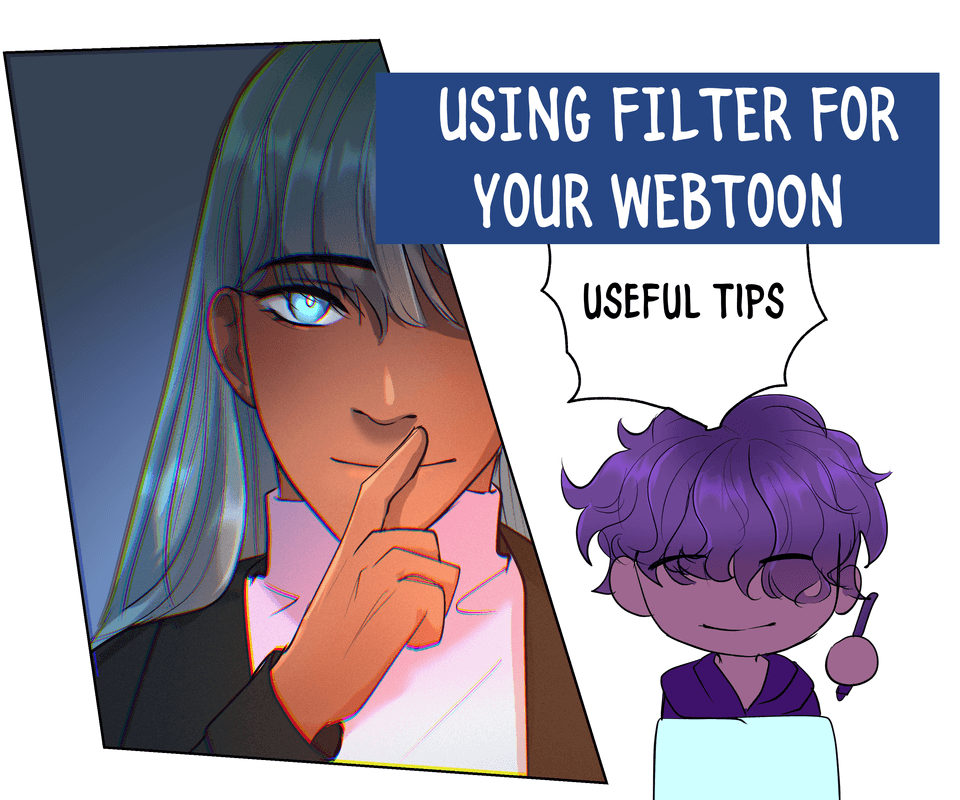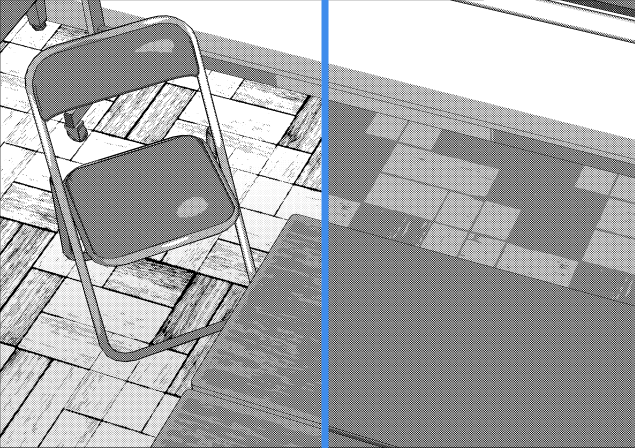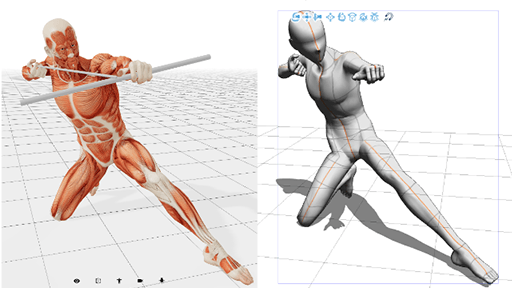How to color skin using greyscale, tone curve, & brightness
1. Preparing (Brush & Tools)
Let's prepare paint clip studio software, and set a few shortcut to make it easier to get this piece done.
- Open setting from File > Shortcut Settings > Make sure the setting area is "Main Menu" (Header of shortcut settings window) > "Layer" dropdown > scroll until you find "Duplicate layer" > Edit Shortcut.
- Same process as above, scroll down to see "Window" > Sub Tool Detail > Edit Shortcut.
========================================================
NOTE: IF YOU ALREADY HAVE YOUR OWN SHORTCUT SETTING JUST GO STRAIGHT TO NEXT POINT.
Pen Settings, press "P" to activate > go to sub tool for pen > drag G-pen to "+" Icon at the bottom of the window (Subtool window) to duplicate it.
Scroll down until you find your duplicate > select it to activate it > Right Click > Settings of sub tools > Edit the name.
Change to "Tool Property Tab" (beside Subtool window look above) > Remove Pen Pressure on Brush Size.
Add the Pen Pressure on Brush Density (Scroll down a bit to find the option).
2. Sketch
On to the sketch process, mainly i only use G-pen for sketching, by setting up the brush size and pen pressure like i did. now let's do rough sketch of what to draw, for me let's draw a human figure / model.
Rough sketch is important since it will be your base to draw a fixed line above it.
Make sure it's anatomy are correct. (Try to check any reference on google), and here is my rough sketch.
Now after drawing the pose, let's just start draw a fixed line above it.
- Make a new layer by clicking the "New Raster Layer Icon" at bottom of your layer window.
Draw your fixed line art above rough sketch, make sure to draw on one fell swoop to make a nice line art.
Consider making a part per layer (for example, Face on 1 layer, Body on 1 layer, and so on) and combine it to one layer later on.
This is my final line art, how's yours? if you find any difficulties, try to look on a reference but don't trace any of it. (if you do, just keep it for learning purposes)
3. Blocking & Shading
Let's color blocking the lineart, doing so will make it easier for you to color any part of your sketch
- Choose the layer you want to color & press "G" twice to get your bucket tool and choose "refer other layer" on Subtool window.
- "refer other layer" mode is activated to fill the area inside the line art, even though it is placed on a different layer. (*refer to image below).
Make a new layer and start shading it on top of the blocking layer
See the red rectangle, choose layer > click the icon to clip it underneath the block layer so that your shade won't be outside of the blocking layer. (*refer to image below).
- Shade the face by using Pen / Brush tools with "pen pressure" activated on density and opacity then start shading it softly. (*refer to point 1 on Preparing Brush & Tools).
- Try to fill all area with grey color with a correct shade anatomy of human figure.
- After filliing all the figure with correct shading, go to layer > New Correction Layer > Tone Curve.
- Double Click the tone curve layer (grey color one *refer to image below).
Choose the dropdown RGB menu on top left of the window.
Choose Red, and click the line curve to make a point. (make 1 or 2 point to make an adjustment for the skin).
(*refer to the image below).
- Drag the point you have just created to make an adjustment for it.
- Let's think about how human skin behave in natural way, when we're looking at our skin, it's not about red, but also a yellow, and cyan for the vein, and how the lights & shadows affect the skin surface.
- To make it look natural let's adjust the blue curve and try to decrease it, by doing this, we already make an adjusment for the base color of red and yellow at the same time. (*refer to image below).
- Now you see the difference of the color, it look more natural compared to the one above with only a red color adjustment from tone curve feature.
- You see, if you ever find any difficulties on coloring skin, try to use this method to make it easier since you won't be confused about what kind of color should i use to shade my character skin? as long the base greyish color are correct, you are good to go.
- Done with the main skin tone, let's start to refine / polish the skin tone.
4. Polishing
After done with the base skin tone, let's do some adjustment to make the skin brighter.
- Layer > New Correction Layer > Brightness/Contrast.
- If you're satisfied with the result, just merge all the layer and do the color picking stuff (Hold Alt while on pen/brush mode) to start polishing the skin that's darker or brighter because of the lights and shadows.
Well it's far from done if you ask me, but after a long run refining here and there, i come up with this as the base for adding a lightings and shadows later on.
- At this point, you can start adding lightings and shadow, but remember where you place the light. (for me it's top right front slightly to the middle).
- Just create a new layer for the lights and start paint some on top of the skin tone but stroke softly with brighter color (notice the thigh and abs that's where i add my lights).
(*refer to image below).
- Merge down all of the layer once it's finished. but remember to have a backup layer in case you want to go back to previous one. (*refer to point 1 about preparing brush & tools where i setup my duplicate layer shortcut).
- Make another adjustment if you don't feel satisfied with the result. (*refer to point 3 about blocking and shading).
- Now it's looks more refined than before, but it's not done without Highlights
- The brightest part of it, but brighter, and only a few parts are affected by highlight (*refer to image below).
Well, that's all i can say for this tips..
Hope you guys get a useful information of it..
5. The Importance of Sub Tool Detail Shortcut
Here, i'll explain a little about why you should setup your shortcut for "Subtool Detail" (*refer to point 1 preparing brush & tools where i setup my Sub Tool detail shortcut by pressing "F5").
- it has a lot of option to make adjustment to your brush for example, opacity, color jitler, brush shape & etc. (*refer to image below)
- Costumize your tool property panel by clicking the "eye icon" on the Sub Tool Detail window. (*refer to image below).
- Now after clicking the "eye icon" on the "Sub Tool Detail", the opacity option on your tool property window brush are gone., this way, you can add or remove any property that are unused to make the workplace looks neat. (*refer to image below)
- Again, it's very handy, not just about brush, when other tools are activated, you guys can see the Sub Tool Detail Window option are changed depend on what tool are active at the moment.
- This one i activated a "lasso tool" by pressing M on keyboard, so the option changed for lasso tool only on the Sub Tool Detail. (*refer to image below).
- Well that's all i can say about Sub Tool Detail, and why it's very important to make your workflow easier.
Finished
Like, share, and comment are appreciated but feedback would be very helpful.
Thank you for reading my tips, hope that you're practice is going well and have a nice day XD.















コメント